Core strength is important for every movement and activity in life. Without core strength, our bodies become uncoordinated, weak or susceptible to injury. One of the core’s main functions is to brace the spine for stability, which is particularly essential to support the body during unwanted motions.
Anti-rotation exercises train core stability without rotating the torso. This is important for the lumbar spine, which is a stabilized joint (with very little range of motion). Thoracic rotation is necessary for various movements and athletic motions. However, core stability and anti-rotation movement are important for many pursuits.
Consider this example from everyday life: If two people pass each other on the street and knock shoulders, the core needs to react, stabilize, resist rotation and stay upright. If the core does not activate, the person will follow the rotation pattern and fall.
A rugby scrum offers a good example from sports: As opponents connect, the core must activate to maintain level ground. If these muscles are weak, the opponent will have the advantage to push and rotate the opposing team member to gain access to the ball. If you’ve ever seen a scrum where two teams maintain stability but rotate the scrum in a uniform and (counter) clockwise fashion around the ball, it means both teams are strong in stabilizing their position.
Here are seven anti-rotation exercises to show how to build from the basics with bodyweight movements and progress toward loaded cable exercises. These exercises are appropriate for every type of client who requires core development and strength. It is up to you, the trainer, to determine sets and repetitions based on the client’s fitness level.
Seated Bench Partnered Anti-rotation

Have the client begin on a bench with an upright spine and feet flat on the floor. Stand behind the client and place your left hand in front of the body above the pectoral muscles. Place your right hand behind the shoulder around the trapezius muscle and scapula. Apply pressure on both hands to make the client contract the core without rotating in either direction. Apply pressure for five to 10 seconds. Switch hand positions to the other side. Continue several repetitions on each side.
Progression: Have the client close his or her eyes and randomly choose sides to increase unpredictability.
Seated Unstable Surface Anti-rotation
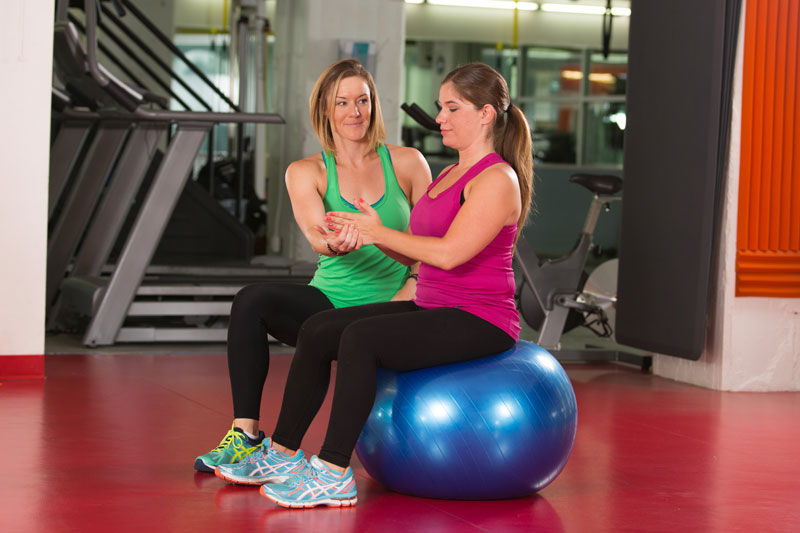
Have the client sit on an unstable surface (stability ball works best) with an upright spine and feet flat on the floor. Stand in front of the client and cue the client to bring the elbows to 90-degrees with palms pressed together. Apply pressure on the right side of the client’s hand and hold for several seconds. The client must resist the pressure in order to anti-rotate. Switch to the other side. Apply pressure, alternating on the right and left side of the hands.
Progression: Increase lever length by extending the arms; and/or close the eyes.
Standing Anti-rotation

Position the client upright in a bilateral stance (feet hip- to shoulder-distance apart) and arms extended in front of the body with the palms pressed together. Apply pressure on the right and left side of the client’s hands. You can also apply pressure on the forearms to stimulate change. Apply pressure, alternating on the right and left side of the hands.
Progression: Position the client in a unilateral stance.
Anti-rotation Band Squats
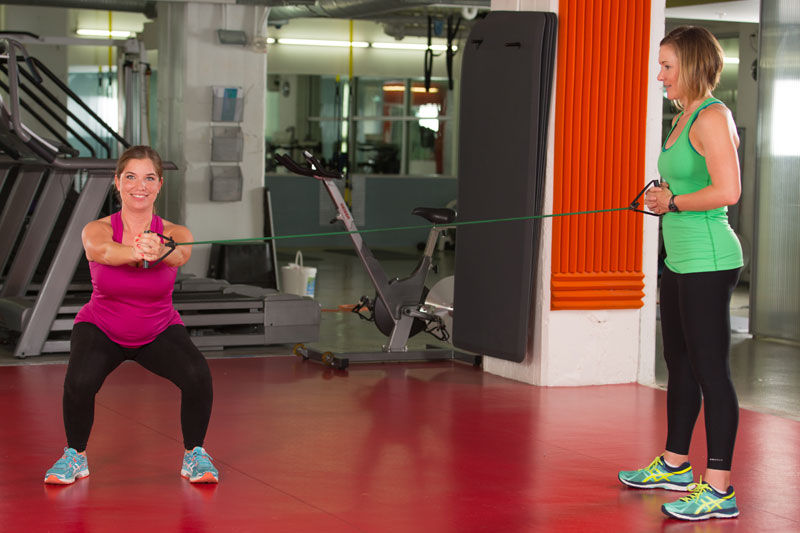
Position the client into a squat stance with arms out in front. Have the client hold one end of a resistance band. Stand on the client’s right side, holding tension on the band. Cue the client to perform a squat while resisting the band (this requires the left side to activate more). The goal is to squat while maintaining stability. After several repetitions, move to the left side of the client’s body.
Anti-rotation Band with Split Stance
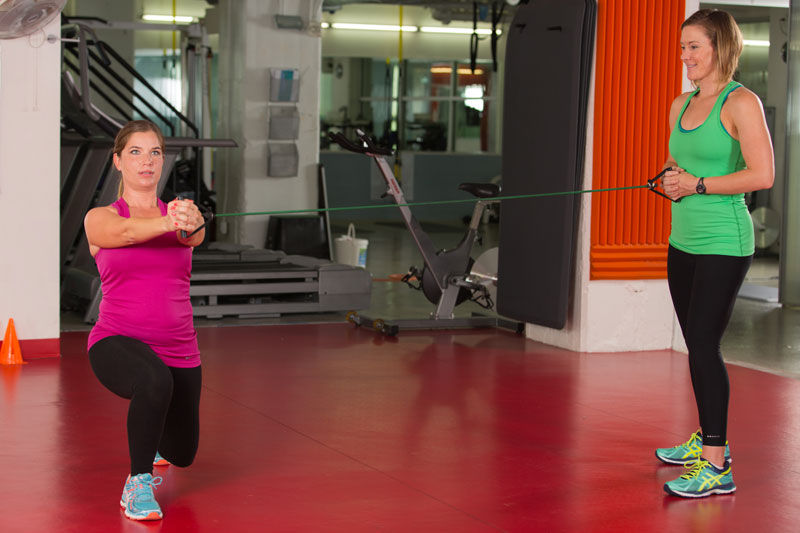
Position the client into a lunge stance with the right leg forward and arms out in front. Have the client hold one end of a resistance band. Stand on the client’s left side, holding tension on the band. Cue the client to perform a lunge while resisting the band. Complete several repetitions before switching sides.
Alternative Exercise: Have the client perform a one-legged squat or balance exercise instead.
Kneeling Cable Pallof Press
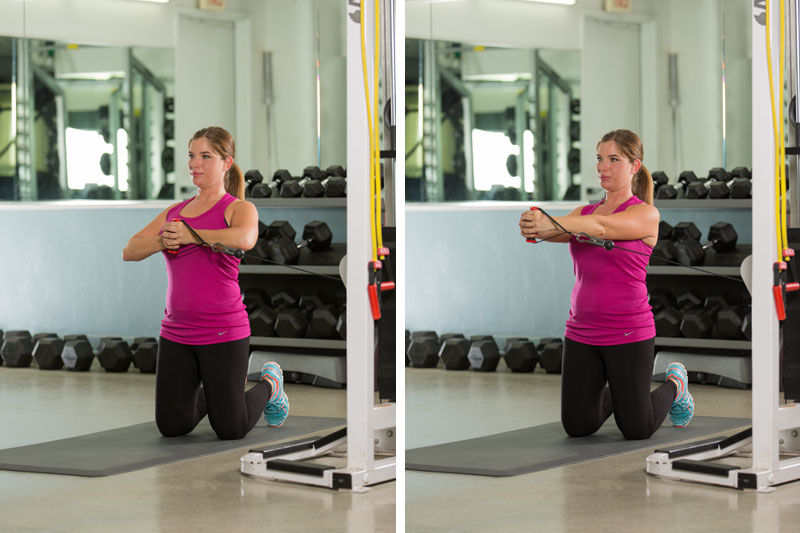
Place a mat on the floor. Load the cable machine and have the client kneel on the pad. Place the cable in the client’s hands, with tension. Have the client hold his or her hands close to the chest. Maintaining stability, cue the client to extend the arms and then draw the arms back toward the chest. Continue several repetitions.
Progression: Perform in a standing position.
Standing Anti-rotation Cable Chop
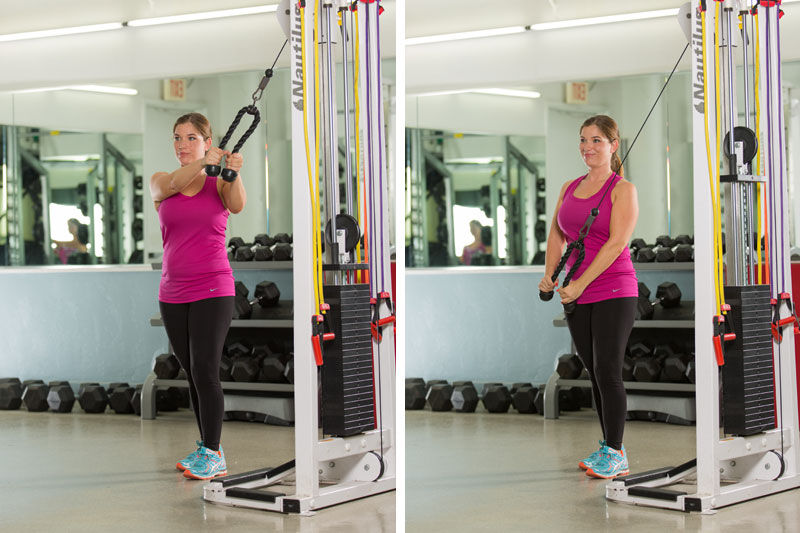
Use the triceps extension rope and adjust the cable higher than the shoulders. Load the cable and position the client to where the right side of the body faces the cable machine with a bilateral foot stance. Have the client grab one end of the rope in each hand, contract the core and chop the arms diagonally toward the left hip. The elbows will flex and extend naturally, but minimal movement should occur between the pectorals and hips. Complete several repetitions before switching sides.
Regression: Perform half-kneeling.




 by
by 





 by
by